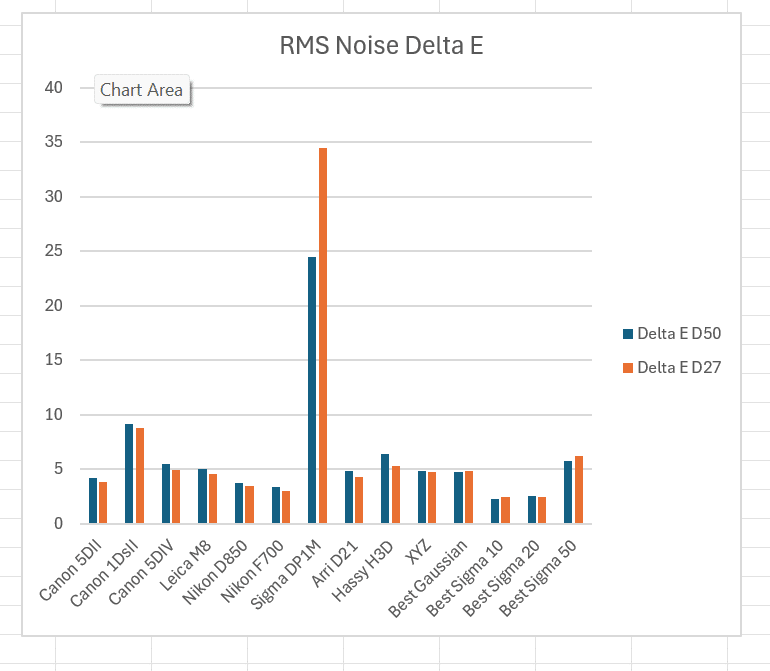A long-time reader commented on the previous post:
One aspect of low light performance is low noise under warm lighting.
At sub-2700K, many older cameras end up with tremendously large WB multipliers for the blue channel, when compared to “modern” CFAs.
I decided to take a look at that. I’ll show you what I found, then I’ll explain.
The blue bars are the old data, with the illuminant spectrum set to D50. The orange bars are new data, with the illuminant spectrum set to D27. The compromise matrices for the D27 results were trained on the D27 data. The XYZ SMI results are unaffected by the change in illuminant, as you would expect. The best Gaussian for D5o is also excellent used with a D27 illuminant (I didn’t compute the optimal Gaussians for D27).
Turning now to the noise:
All the noise results, with the exception of the Sigma DP1 Merrill, don’t change much with the illumination change. The DP1M gets even worse under D27 illumination.
So, my results don’t square with the reader’s assertion. I think the reason may have something to do with my computing optimal compromise matrices for D27.
I was asked about Illuminant A. Here’s what I got with that added to the mix:




CarVac says
I took a look back at the first article in the series and I realized that those spectral sensitivity plots are all normalized to each channel’s peak, so it may not be representative of the real-world noise performance with white balance scaling taken into account.
JimK says
True. I don’t have access to the unnormalized curves. Looking for the keys under the streetlamp. I do have a place in the program to compensate if I ever get the data.
Gao says
There are some astronomy camera sellers that publish the sensitivity curves (need to normalize by photon energy) or QE curves, for example:
https://www.qhyccd.com/qhy5iii715c/
Not the cameras you’ve been talking about but real-world examples nonetheless.
MikaFoxx says
Fascinating. From a little research it seems that SMI took a bit of a nosedive in canon cameras with the 5D mk3 and 6D. It would be curious to see what modern mirrorless cameras display for this property, as DXOMark stopped measuring them a good while ago.
https://github.com/butcherg/ssf-data
This page seems to have measures spectral response of the 6D and a Z6 as well as others.